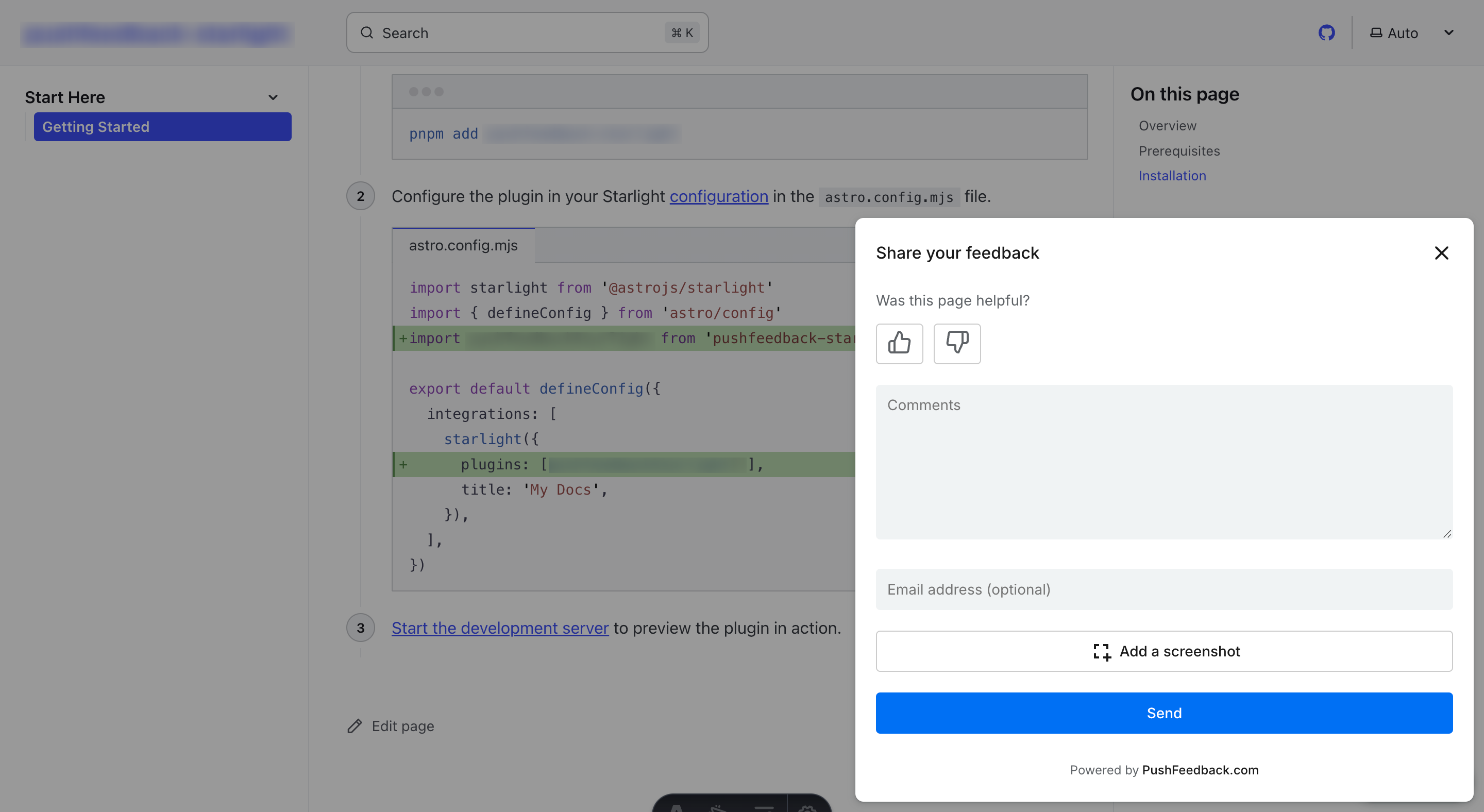Feedback widget for Next.js
Here's a step-by-step guide to help you install PushFeedback in your Next.js project using NPM.

Prerequisites
Before you begin, you'll need to have the following:
- A PushFeedback account. If you don't have one, sign up for free.
- A project created in your PushFeedback dashboard. If you haven't created one yet, follow the steps in the Quickstart guide.
- A Next.js application and Node.js installed.
Installation
To integrate the PushFeedback widget into your Next.js site:
Open your terminal or command prompt. Navigate to your project's root directory using the
cdcommand:cd path/to/your/projectReplace
path/to/your/projectwith your project's actual directory path.With your terminal still open, run the following command to install PushFeedback:
npm install pushfeedback-reactinfoIf you're using yarn as your package manager, run
yarn add pushfeedback-reactinstead of the npm command above.This will download and install the PushFeedback package into your project.
Create a wrapper for the feedback button by creating a file under the path
components/pushfeedback.tsxand paste the following code:import React, { useEffect } from 'react';
import { FeedbackButton } from 'pushfeedback-react';
import { JSX, defineCustomElements } from 'pushfeedback/loader';
import { StyleReactProps } from 'pushfeedback-react/dist/types/react-component-lib/interfaces';
import 'pushfeedback/dist/pushfeedback/pushfeedback.css';
const DynamicFeedbackButtonComponent = (props: React.JSX.IntrinsicAttributes & JSX.FeedbackButton & Omit<React.HTMLAttributes<HTMLFeedbackButtonElement>, "style"> & StyleReactProps & React.RefAttributes<HTMLFeedbackButtonElement>) => {
useEffect(() => {
defineCustomElements(window);
}, []);
return <FeedbackButton {...props} />;
};
export default DynamicFeedbackButtonComponent;In the component where you wish to display the feedback button (often
_pages/app.tsxorapp/layout.tsx), include it shown below:'use client'
import dynamic from 'next/dynamic';
export default function Banner() {
const DynamicFeedbackButton = dynamic(() => import('@/components/utils/pushfeedback'), {
ssr: false,
});
return (
<div className="App">
{/* Other components and content */}
<DynamicFeedbackButton project="<YOUR_PROJECT_ID>" button-position="bottom-right" modal-position="bottom-right" button-style="dark" custom-font="true">Feedback</DynamicFeedbackButton>
</div>
);Replace
<YOUR_PROJECT_ID>with your project's ID from the PushFeedback dashboard.Start your Next.js app by running
npm startoryarn startin your terminal. Once it compiles successfully, verify that the feedback button appears and functions correctly on your site.
Next steps
For more about customization and additional features exploration, check out the Customization section.
Need assistance? We're here to help! Reach out to us at PushFeedback Support.